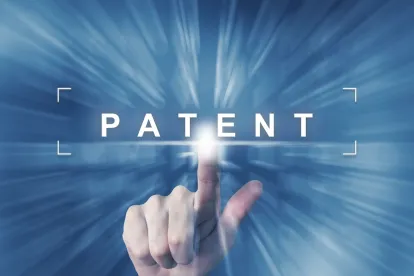Raising the hurdle for proving secondary considerations, the US Court of Appeals for the Federal Circuit found that the “coextensiveness” requirement for purposes of nexus requires that the practicing product be “essentially the claimed invention.” FOX Factory, Inc. v. SRAM, LLC, Case No. 18-2024, -2025 (Fed. Cir. Dec. 18, 2019) (Prost, J.).
Bicycle chainrings are the toothed disks to which bicycle chains engage. SRAM owns a patent directed to an improved chainring structure that better maintains the chain, obviating the need for extraneous structures. The independent claims of the patent recite a chainring with alternating narrow and wide tooth tips and teeth offset from the center of the chainring. Some of the claims recite tooth tips offset toward the body of the bicycle (inboard offsets) and other claims recite teeth offset away from the body of the bicycle (outboard offsets). The specification discloses additional chainring features that are not recited in the claims. Each of the disclosed but unclaimed features contribute to improving chain retention. For example, the specification discloses forwardly protruding tip portions that function to engage a chain link earlier than a chain lacking the tip portion, a hook feature formed on the rear flank of each tooth to provide better guiding of the chain, and also that the narrow and wide teeth preferably fill at least 80% of the axial distance of the corresponding space in the chain link (>80% gap filling). SRAM sells 13 different versions of its “X-Sync” chainrings, 12 of which embody the inboard offset claims and one of which embodies the outboard offset claims. The X-Sync chains also embody the unclaimed features disclosed in the specification.
FOX filed two petitions for inter partes review (IPR) of SRAM’s patent, arguing that the outboard offset and inboard offset claims were obvious. After instituting the petitions, the Board found that the asserted prior art references disclosed all the limitations of the challenged patent claims and that a skilled artisan would have been motivated to combine the asserted prior art to arrive at the claimed invention. However, the Board found that the prima facie case of obviousness was overcome by secondary considerations. In finding secondary considerations, the Board found SRAM was entitled to a presumption of nexus between the challenged outboard offset claims and secondary considerations evidence pertaining to SRAM’s X-Sync since the outboard offset claims broadly covered the X-Sync. FOX appealed.
On appeal, FOX argued that the Board applied the wrong standard for determining whether SRAM was entitled to a presumption of nexus between the challenged claims and SRAM’s evidence of secondary considerations. In addressing the presumption of nexus, the Federal Circuit reaffirmed its “coextensiveness” precedent, stating that “a patentee is entitled to a rebuttable presumption of nexus between the asserted evidence of secondary considerations and a patent claim if the patentee shows that the asserted evidence is tied to a specific product and that the product “is the invention disclosed and claimed.” In a similar vein, the Court explained that the patentee is not entitled to a presumption of nexus “[w]hen the thing that is commercially successful is not coextensive with the patented invention—for example, if the patented invention is only a component of a commercially successful machine or process.”
While the parties disputed whether the X-Sync chainrings are coextensive with the independent claims, the parties did not dispute that the X-Synch chainrings include unclaimed features. For instance, SRAM did not dispute that its X-Sync chainrings embody the independent claim of a different patent that cover a chainring with both wide and narrow teeth and wide teeth with >80% gap filling. The Court found that because the claims of the challenged patent did not recite this additional feature, the challenged claims were not coextensive with the X-Sync chainrings.
The Federal Circuit also found that the lack of coextensiveness between the challenged claims and the X-Sync chainrings extended beyond the gap filling feature. For instance, the X-Sync chainrings include features relating to: (1) forwardly protruding tooth tips; (2) hook features on the teeth; and (3) mud-clearing recesses, all of which were disclosed in the patent specification but not recited in the challenged claims. The Court also noted that SRAM’s marketing materials described and touted these additional unclaimed features. The Court, however, was careful to note that it has “never held that the existence of one or more unclaimed features, standing alone, means nexus may not be presumed. Indeed, there is rarely a perfect correspondence between the claimed invention and the product.” The Court stressed that “the purpose of the coextensiveness requirement is to ensure that nexus is only presumed when the product tied to the evidence of secondary considerations ‘is the invention disclosed and claimed.’ Thus, if the unclaimed features amount to nothing more than additional insignificant features, presuming nexus may nevertheless be appropriate.” The Court explained that to meet the coextensiveness requirement, the patentee must demonstrate that the product is essentially the claimed invention. This is normally a fact-intensive inquiry that “should ordinarily be decided by the fact finder in the first instance.”
In this case, where it was undisputed that the X-Sync chainrings include unclaimed features that the patentee describes as “critical” to the product’s ability to “better retain the chain under many conditions” and that go to the “heart” of another one of SRAM’s patents, the Federal Circuit found that no reasonable fact finder could conclude that these features are insignificant, and that no reasonable fact finder could conclude, under the proper standard, that the X-Sync chainrings are coextensive with the patent claims. The Court vacated and remanded with instructions that the Board reevaluate the import of the evidence of secondary considerations with the burden of proving nexus on SRAM.



 />i
/>i
